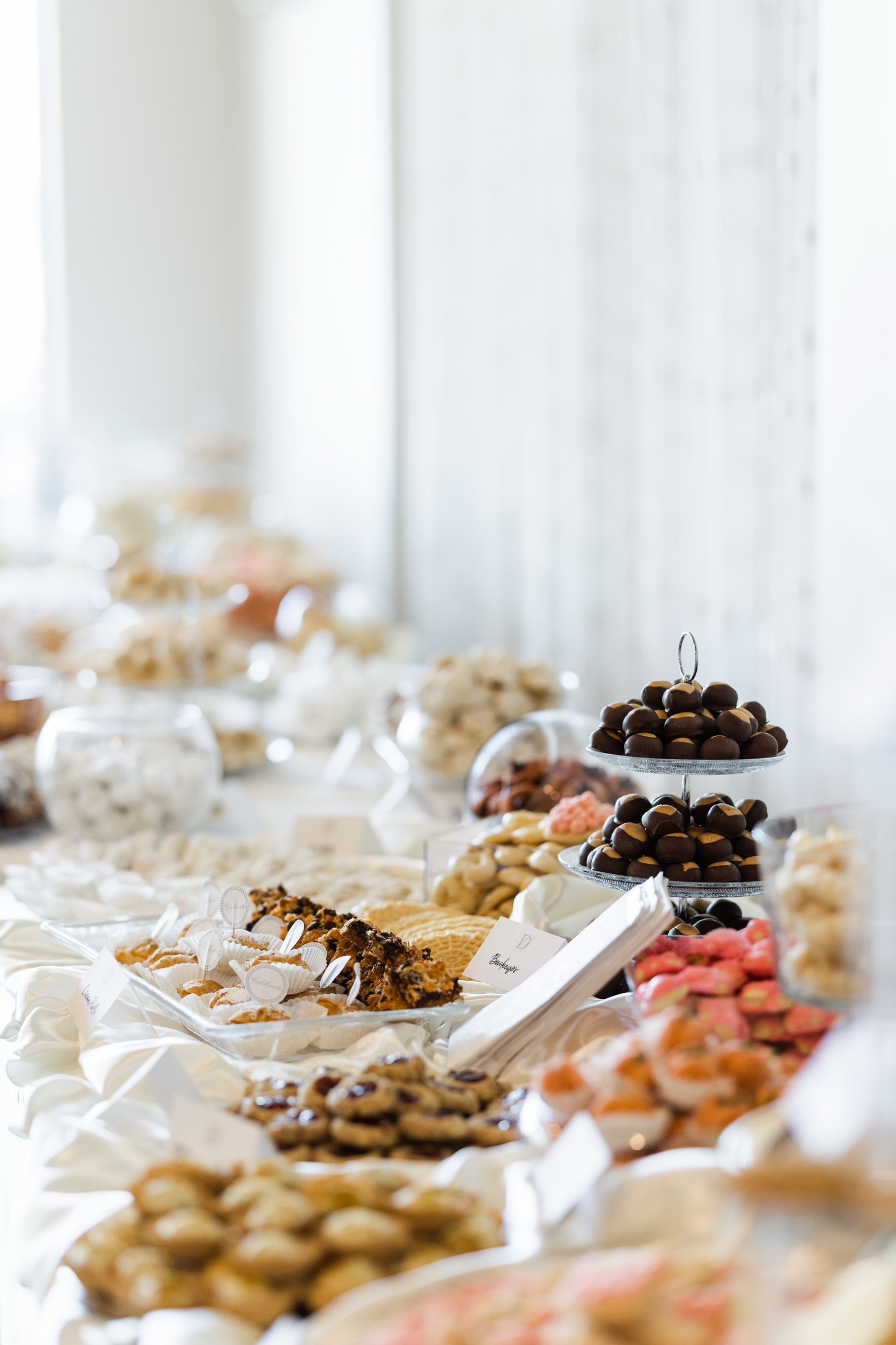The Sweet Debate: The Origin of the Wedding Cookie Table in Northeast Ohio
Let’s dive into one of the most delicious and delightful (and argued) wedding traditions: the cookie table.
This custom has sparked a friendly debate among a few cities, each claiming it as their own. So, grab a cup of coffee (or a glass of wine), and let’s explore the origins, traditions, and significance of the wedding cookie table, especially through its Italian roots.
The Great Cookie Table Debate
If you’ve ever attended a wedding in Cleveland, Youngstown, or Pittsburgh, you’ve likely encountered the famous cookie table. And when I say table, I really mean tables. Honestly, sometimes it’s an entire room filled with tables FULL of cookies.
Piled high with an array of homemade cookies, it’s a sight to behold and a treat to enjoy.
But where and why did this tradition originate?
Each city proudly claims the cookie table as part of its heritage. Cleveland, with its vibrant mix of Italian, Polish, and Eastern European communities, boasts some of the finest cookie tables.
Just an hour and a half away, Youngstown, known for its strong Italian-American presence, insists that the tradition started there. Meanwhile, Pittsburgh, another city rich in Italian culture and tradition, also lays claim to the cookie table’s origins.
So, who’s right?
The truth is, the origins of the cookie table are as diverse as the cookies themselves. While we may never pinpoint exactly where this sweet tradition began, we can agree on its importance and enjoy its delicious legacy.
The Italian Connection
Photographer | Tim D Media
One thing is for certain (and it’s not just because the writer of this blog is 100% Italian), the cookie table tradition is deeply rooted in Italian culture, where food plays a central role in family celebrations.
For Italian-Americans, weddings are not just about the union of two people, but also about the joining of families, communities, and traditions.
Some say this tradition crossed the Atlantic with Italian immigrants who settled in the industrial cities of the American Midwest. Others say that during the Great Depression, people couldn’t afford to pay for an elaborate wedding cake, so Italian families baked dozens and dozens of delicious cookies to provide dessert for wedding guests.
The Importance of the Cookie Table
The cookie table is more than just a wedding dessert.
It’s a labor of love and a symbol of community. In many families, baking cookies for the wedding is a collaborative effort involving mothers, grandmothers, aunts, and cousins. Each family member brings their own special recipes, handed down through generations, to create a cookie table that reflects the family’s heritage and love.
These cookies aren’t just any cookies.
We’re talking about Italian classics like pizzelles, biscotti, and anisette cookies, alongside American favorites like chocolate chip and peanut butter blossoms. The variety and abundance of cookies have always been a testament to each familys’ love, dedication, and hospitality.
The Role of the Family
Photographer | Tim D Media
In the months leading up to the wedding, kitchens are basically transformed into cookie factories. Flour flies, mixers whir, and ovens stay warm for hours on end.
It’s a time of bonding and storytelling, as recipes are shared and perfected.
The bride’s family typically takes the lead, but it’s not uncommon for friends and extended family to join in the baking frenzy. The result is a cookie table (really a buffet) that can feature dozens, usually hundreds, of different types of cookies.
Some couples honor those who baked by creating cards that name the cookie and the baker behind the delicious dessert so that guests are aware. It’s a simple way to recognize those family members who went out of their way to make their day extra sweet.
Each one is a sweet testament to family and tradition.
Setting Up the Cookie Table
Photographer | Greenwood Photography
On the big day, the cookie table (or room) is set up as a focal point at the reception. It’s often decorated to match the wedding theme, with beautiful platters and tiered stands showcasing the cookies.
Guests are invited to help themselves throughout the evening, and it’s customary to provide boxes or bags, so they can take some cookies home.
The cookie table serves as a wonderful conversation starter and adds a personal touch to the wedding celebration. It’s a way for the couple to honor their heritage and share a beloved tradition (and delicious treats) with their guests.
A Tradition That Sticks
Photographer | Tim D Media
Despite the debate over its origins, one thing is certain: the cookie table is a cherished tradition that shows no signs of fading.
Whether you’re in Cleveland, Youngstown, Pittsburgh, or any other city with a strong Italian-American community, the cookie table remains a symbol of love, family, and cultural pride.
So, the next time you find yourself at a wedding with a cookie table, take a moment to appreciate the history and effort behind it. Each cookie tells a story of tradition, community, and the sweet bonds that unite us all.
Photographer | Greenwood Photography
In the end, it doesn’t really matter where the cookie table originated. What matters is the joy it brings to weddings and the way it connects us to our past and each other. Here’s to many more weddings filled with love, laughter, and, of course, plenty of cookies.
Buon appetito!












